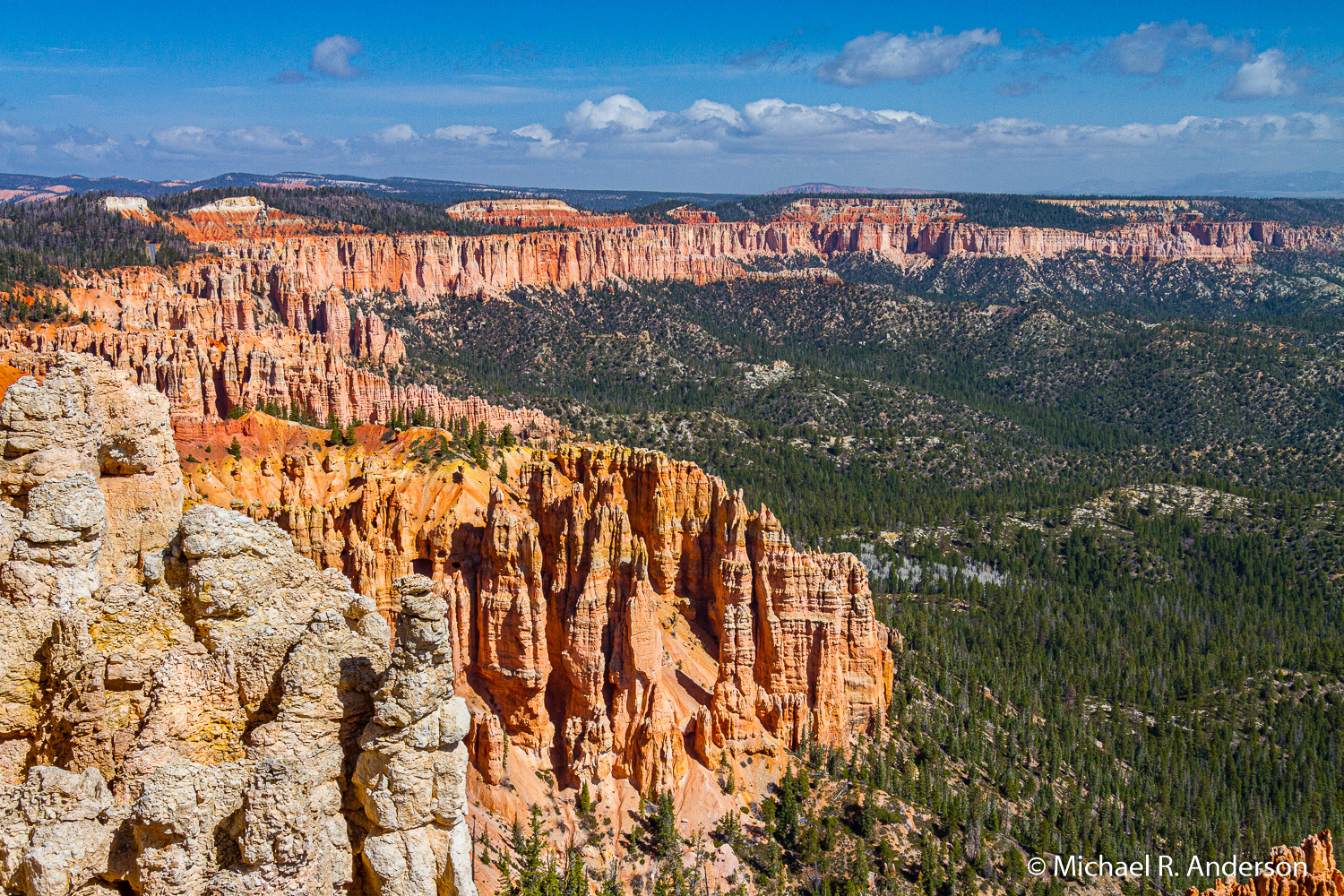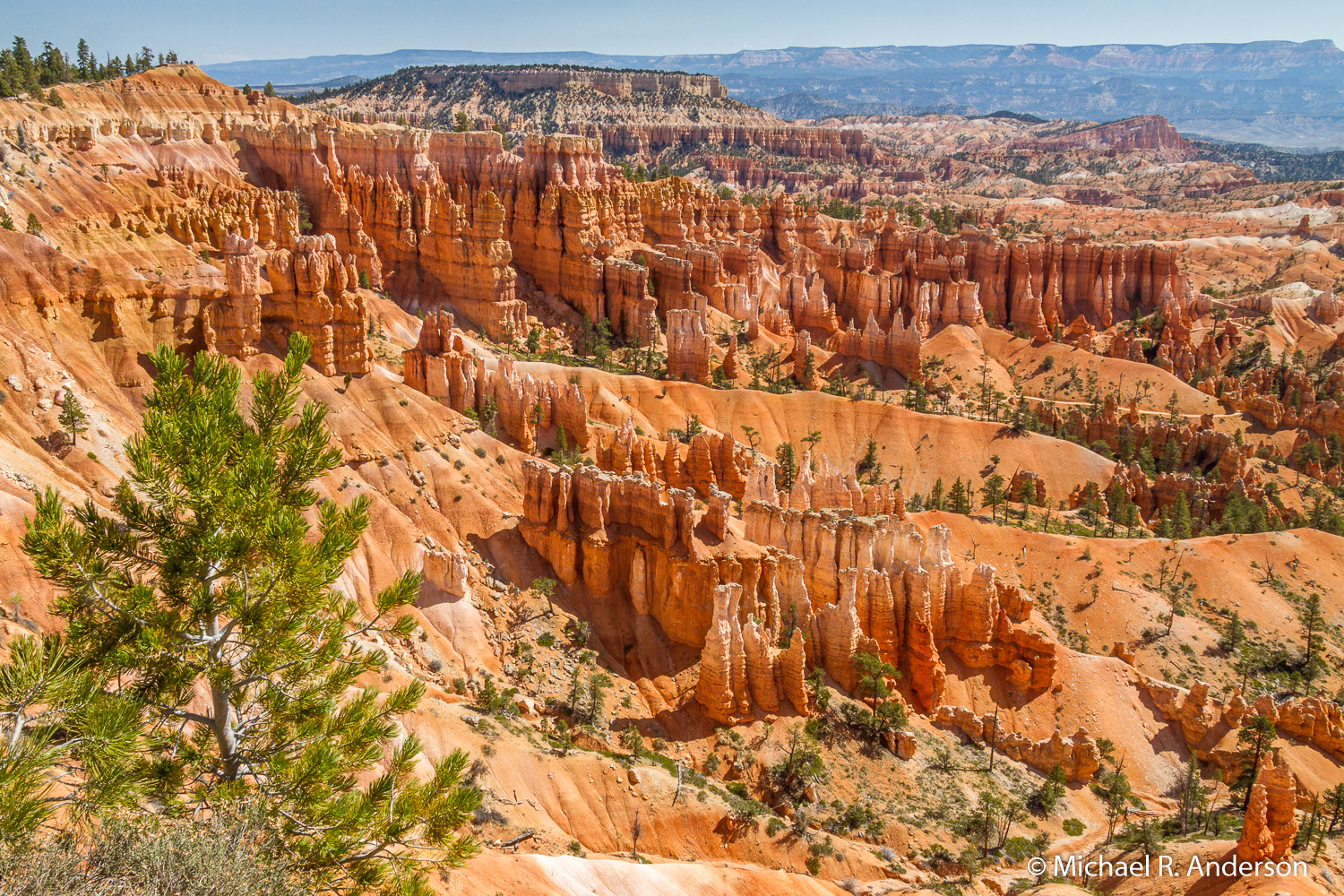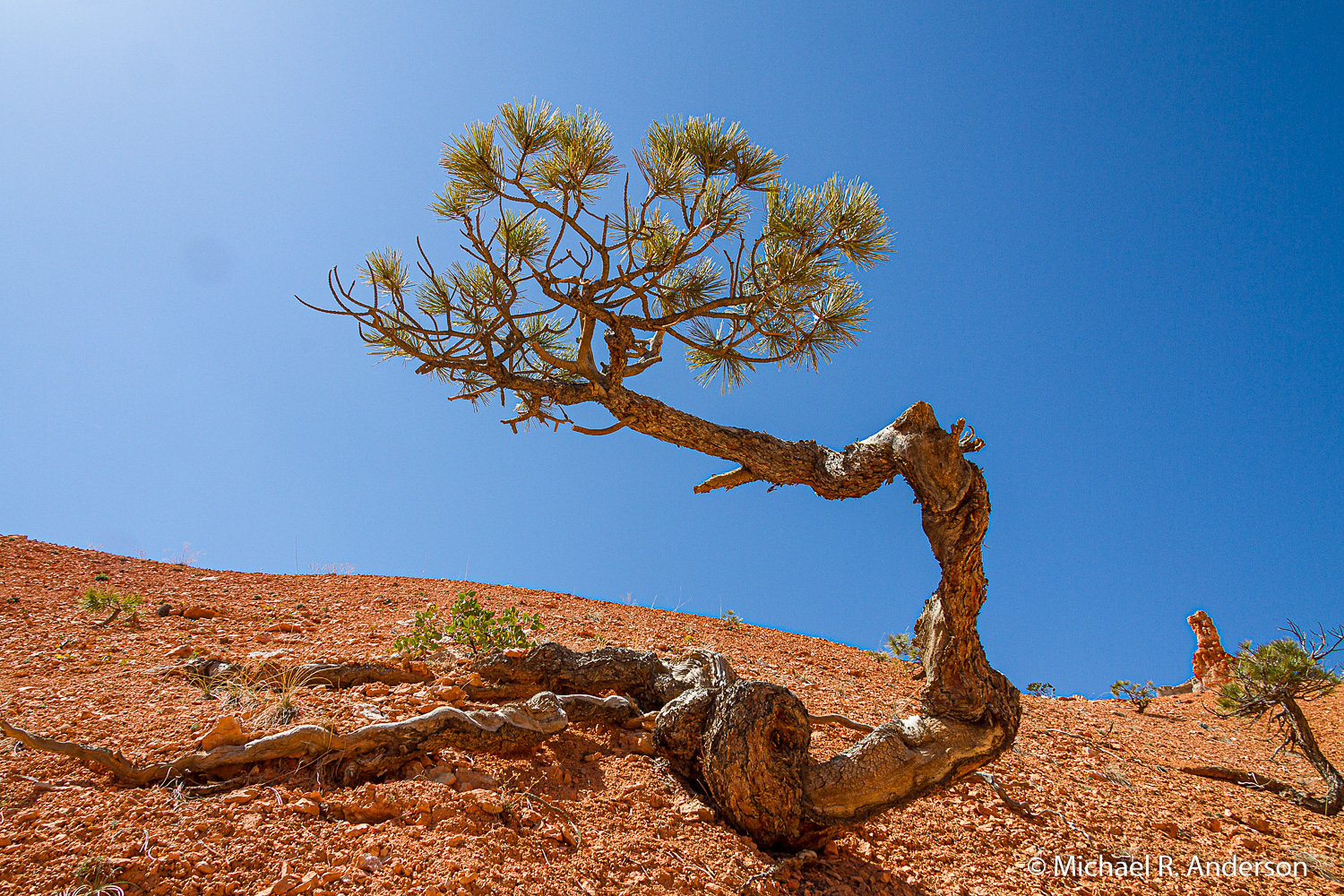
Bryce Canyon National Park is located in southwestern Utah. If you need a nature fix, Bryce is pretty nice. Spoiler Alert: Despite its name, Bryce Canyon is not a canyon, but a collection of giant natural amphitheaters along the eastern side of the Paunsaugunt Plateau.
The amphitheaters are filled with very distinctive geological structures called hoodoos. They look like giant versions of drip castles that kids make at the beach. But, they’re not made by giant kids, they’re made by frost weathering and stream erosion of the river-bed and lake-bed sedimentary rocks. The red, orange, and white colors of these formations create some amazing views.
(Click on any photo to enlarge, then use arrows to scroll through the images.)
If you’re not into hiking, you’re in luck. The 18-mile long park road roughly parallels the edge of the plateau and provides at least ten viewpoints that are generally only a short walk from the parking areas. From these viewpoints you can see not only a myriad of hoodoos, but also some unique formations like “Thor’s Hammer” and “Natural Bridge.”

While walking along the rim one afternoon, we could see some clouds that were beginning to look troublesome. As we continued, we eventually experienced what westerners might call a “six-inch rainfall”; the drops fell six inches apart. After the rain passed we were rewarded with a wonderful rainbow. The colors were faded at first, but the sun eventually cranked them up. To give you an idea of how long the “storm” lasted, the two photos below were taken 7 minutes and 38 seconds apart. (Digital cameras are so precise!)
If you happen to have both the time and the energy, I recommend heading out on one or more of the trails. Walking down, around and through the hoodoos is an interesting hiking experience. I had never seen scenery like this. My neck got a little sore from looking up at all of the interesting formations. One of them is named “Queen Victoria” because it looks like, well, I’ll let you figure it out. In addition to the hoodoos, you’ll find pine trees that have been able to grow very tall in some very narrow spaces.
Although its main feature is the colorful collection of hoodoos, there are other things to see in Bryce. Fauna? If you pay attention you might spot some Pronghorn Antelope, or a whole town full of Utah Prairie Dogs, or crows so large they don’t have to beg for food, you just hand over your sandwich and run away. Flora? Hidden among all the Ponderosa Pine trees you could see some Quaking Aspen, a tree that seems like it should be in Colorado. According to the Park Service, Quaking Aspen used to be more widespread in this region but suppression of forest fires has allowed pine trees to dominate. Prescribed burns are being used to help restore stands of aspen. If you happen to be visiting Bryce in the spring, you can enjoy the pink blossoms of the Greenleaf Manzanita, which is a common shrub that loves growing among the Ponderosa Pines.
In closing, I should mention that Bryce is only one of five National Parks located in Utah. There are also seven National Monuments, three National Wildlife Refuges, forty-three state parks, seven National Forests and other assorted natural spaces. So, even if your GPS conks out, you’re still likely to wind up at some interesting place.
